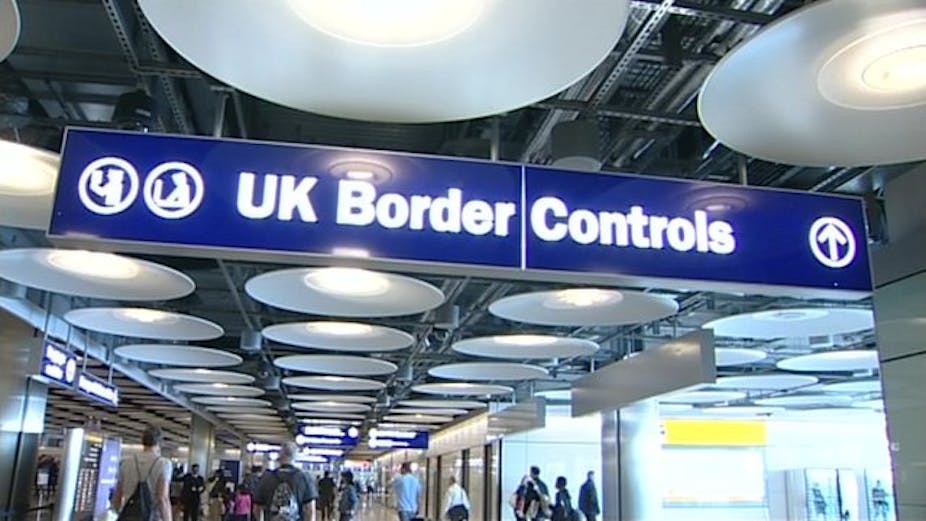David Cameron has received a strong rebuke from the Bulgarian president, Rosen Plevneliev, who revealed in an interview yesterday that he had confronted the British prime minister at an EU summit over his government’s “actions, language and plans” about the likelihood of a mass influx of Bulgarian migrants to Britain after restrictions are lifted on January 1 next year.
In an interview in The Observer, Plevneliev said: “Bulgarian people are raising a lot of questions today about the democratic, tolerant and humane British society. Are we in Great Britain today writing a history of a switch to isolation, nationalism and short-term political approaches?”
Migrants from Bulgaria and Romania will be allowed to take advantage of free movement of labour within EU countries next year – a step which has prompted a great deal of speculation by press and politicians that Britain will be overwhelmed by migrants from those countries. But the truth is that most leading migration experts agree that providing any precise figure is difficult, if not impossible. We’re dealing with something best called, to follow Donald Rumsfeld’s apt description, a “known unknown”. We know there will be migrants – but what we don’t know is how many will arrive when current restrictions on living and working in the UK expire at the end of this month.

Some think tanks offer guesses with hard numbers. One particularly widely cited figure is an estimate by Migration Watch that we should expect about 50,000 migrants from Romania and Bulgaria to enter Britain each year from 2014. That’s about 250,000 over five years. The problem is that these numbers are based on a flawed analogy that doesn’t work.
Let’s examine the figures used by Migration Watch. They claim we can model how many Romanian and Bulgarian migrants will come to the UK based on how many Polish migrants have already migrated to Britain. But there’s a problem. Poland has a population of 38 million people, much larger than Romania’s 21m and Bulgaria’s 7.5m combined. Without much justification, Migration Watch lumps Polish, Bulgarian and Romanian citizens together, arguing it’s logical to estimate the number of new migrants from Romania and Bulgaria by assuming they’ll migrate to Britain in the same proportion as Poles did.
So we scale our figures in proportion to known migration to Britain from Poland and – presto! – we have our estimate of Romanian and Bulgarian migration: nothing more than a share of migration from a different country over a period of time in the recent past. Rather like saying that if I’m one-fifth bigger than you, you’ll consume one-fifth less than me. Or something like that.
The big question is whether the “Polish precedent” can point us toward a clear estimate of migration numbers. Unfortunately for Migration Watch, it cannot.
Poland’s situation is very different from Bulgaria’s or Romania’s in various ways. Poland is much bigger, and the UK was among the first in the EU to open its doors to Polish migration. In contrast, the UK is now in the last group to open its doors to Romanian and Bulgarian migration. This means that migrants from those countries keen to work and live elsewhere have already had opportunities in other EU states. This was not true in Poland’s case.
Polish migrants also came to Britain in larger than expected numbers at a particular time in history: the economic boom years of the mid-2000s. Once the economy began to falter, migration numbers decreased significantly. Restrictions on Romanian and Bulgarian migration will be lifted while the British economy remains weak with little growth. The economic conditions that attracted Polish migrants from 2004 therefore simply do not apply to Romanian and Bulgarian migrants from 2014.
Using known migration numbers from the boom years as a proxy for future migration during stagnation therefore relies on false equivalence – between very different countries, in very different circumstances, at very different times. As should be obvious, this is hardly a basis for a sound statistical forecast.
But I don’t disagree with everything Migration Watch says about this topic: as they themselves have conceded, “There is no purely statistical basis on which one could estimate the likely future flows of migration from Romania and Bulgaria”. This is something we might all agree on – although it calls into question their decision to release an estimate anyway.
The question of how many Romanian and Bulgarian migrants really will come to the UK from 2014 is clearly an important one. But the answer is a known unknown. While we can all appreciate the need for useful figures, the numbers we’re given simply don’t add up.

